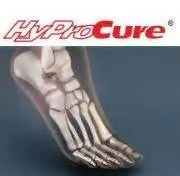Diabetic Foot Care
Diabetes affects millions of people each year. Diabetes damages blood vessels in all parts of the body, including the feet. The legs and feet may have slow blood flow which causes neuropathy (nerve damage). Once a diabetic patient develops neuropathy, it is imperative that the feet are well taken care of to avoid amputation of the feet or legs.
It is important when caring for the feet of diabetics to always wash and thoroughly dry the feet, especially between the toes. Next, examine your feet and toes for any redness or sores that may be there, even if you do not feel any pain. You may also use a mirror to examine your feet from the bottom side. Avoid wearing colored socks to prevent infections that may occur from the dye used in them. Well-fitting socks are also highly recommended.
Anyone with diabetes should have their physicians to monitor Hemoglobin A1C levels as this test lets the physician know how well the blood sugar levels have been controlled during the past 3 months. It is very important to keep the blood sugar levels in the normal range (70-110mg/dl). There are medications that a physician may prescribe to help with neuropathy of the diabetic patient. It is also advisable to visit a podiatrist if the diabetic patient is experiencing any conditions involving the feet. Toe nails may need to be taken care of by a podiatrist as some patients may cut to deep or not deep enough around the cuticles and risk having an infection that could occur.
While at home a person can take care of their feet if they follow instructions given by their physician or nurse. An effective treatment is using creams and applying them to the heels due to the possibility of extreme dryness. Be careful when using tools to remove the calluses as severe diabetics may not be able to feel pain, and this can cause a severe wound to develop.
Diabetic feet absolutely need to be inspected on a daily basis. Always notify your health care professional with any concerns that you may have about the care of your feet. Waiting to see if a wound will get better is not a good idea as it can turn into a life threatening condition. Gangrene is a serious problem for diabetics and can lead to sepsis and amputation. Early treatment and daily inspection of the diabetic feet are keys to staying healthy.
Foot Rehabilitation for Athletes
There is no sport that completely prevents the foot or ankle from becoming injured. In fact, even simple activities such as darts and pool might cause injuries to the foot. When an athlete does suffer from a foot injury, he needs to find a way to get back on his feet right away. Immediate results may be desired, but they are not always possible.
All foot and ankle injuries deserve immediate attention. When the foot or the ankle gets injured, muscles surrounding the bones can weaken or atrophy through disuse. While the bones heal on their own, it takes a more concentrated effort for an athlete to regain full use of his feet and ankles. A doctor may recommend that a person go through a course of physical therapy. The course of physical therapy treatment uses simple, repetitive isometric exercises. The use of the exercises will cause the body to rebuild the muscles and tendons in the area over time and restore the full range of movement.
When selecting ankle and foot rehabilitation services, an athlete needs to find a licensed sports therapist (other physical therapists work with more generalized conditions, and while these kinds of physical therapists are dedicated to their job, they do not necessarily understand the special demands of the athlete). A good sports therapist will take their time with a patient, and make sure that he or she understands the problem and the options available for treatment. As long as the doctor expects a person to return to the sport which he enjoys, the sports physical therapist will recommend the exact exercises a person needs to get back in the game.
Although the professional athlete needs a trained sports therapist, an amateur athlete or the weekend player can benefit from foot rehabilitation services for athletes as well. An ankle or foot injury does not have to cause a person go give up the game he loves entirely, so long as he or she seeks out a sports therapist.
Physical therapy may not always heal certain injuries perfectly, but it will more quickly and effectively help the afflicted person get better. Less severe injuries may only take a person out of his favorite sport just for a little while, if he or she sees a sports therapist. If a full recovery is possible, it is definitely worth it to check out ankle and foot rehabilitation services.
Arthritic Foot Care
The average person walks about 75,000 miles during their lifetime, which puts a lot of pressure and stress on your feet. As you age, you lose flexibility and elasticity in the 26 bones and 30 different joints located in your feet, as well as weakening your shock absorbers. Adding arthritis to this mix makes things worse, with inflammation and distorted joints, which is why arthritic foot care is a crucial part of your daily routine at this stage of your life.
The last thing you need if you suffer from arthritis in your feet is for additional, painful conditions to arise, such as bunions, neuroma, or hammertoe. Buying well-fitting shoes, shoes with a lower heel and more room, and shoes that have better arch support are good places to start. Because arthritis will cause you to lose the arch in your foot, it is highly recommended to buy shoes that can support your arch.
On top of getting enough arch support, you need to have a comfortable fit as well. Leaving a finger width between the back of the shoe and your foot is an easy way to measure and gauge the proper size, and having a square or rounded toe box in the front will help even more. It is also recommended to use shoes that have a rubber sole, as this provides a cushion and acts as a shock absorber. It also provides flexibility for the ball of your foot when you push off your heel to walk.
Shoes are not the only way to get proper arthritic foot care though. Exercise helps a lot and will not only strengthen your muscles and joints, but help prevent further injury and pain. For example, stretching the Achilles tendon in the back of your heel will give your foot added mobility, reducing pain because a lack of mobility causes stress in this area. Another good example is massaging the ball of your foot and your toes from top to bottom.
As previously mentioned, one of the best exercises to do is stretching your Achilles tendon. To do this, simply lean against a wall with your palms flat, place one foot forward and one foot back, making sure both feet are flat on the floor, then lean forward, bending your forward knee towards the wall but keeping your back knee straight and unbent. You will feel your Achilles tendon and calf muscles stretch. Another great exercise is the big toe stretch that alleviates stiffness. Place a rubber band around your big toes, keep your feet together, and pull your toes away from each other. You can also place a rubber band around all the toes of one foot and then try to separate them, stretching them out.
Aside from stretching and exercise, pain can be alleviated with non-steroid, anti-inflammatory drugs, heat, and ultrasounds. Topical medicines with capsaicin can also help. So far, there is no completely pain free remedy for arthritic feet, but following some of this advice can go a long way in helping you stay as pain free as possible.
Foot Therapy for Sports Injuries
Whether out on the field or on the courts, in practice or in game, athletes put their bodies through great strain. There are some sports that are more demanding and taxing on the body than others, but the fact is that every sport has an element of unnatural motion or inorganic movement. Take baseball for example. A pitcher winds up and flings their body with incredible amounts of torque in order to get the most possible velocity out of their pitches. This motion is incredibly taxing on the body and can cause serious damage to people.
Yet one of the most salient issues with regards to athletic injuries is with the feet. Whether its simple turf toe, which can leave athletes sidelined for months, or a damaging fracture, foot injuries can be very frustrating. No matter the sport, athletes need to use their feet in some fashion. This is why foot therapies are so important in order to get athletes back on the right track and training again.
No matter the injury, the best way to expedite a convalescence period is to receive physical therapy. Physical therapy is an empirically founded practice that has been proven to work for millions of people. Physical therapists have gone through years of schooling specifically so that that they are able to help people return to form from any injury.
During physical therapy for foot injuries, you will go through regimented training in order to get back to form. Sometimes the training can be very difficult, especially in the beginning when the foot feels awkward, almost like you may have forgotten how to use it. At first you will do basic stretching and twisting exercises in order to get the foot mobility and flexibility back up. The therapist will also massage the injured area in order to activate the muscles as well as to relax them. Over time, however, you will eventually move up to strengthening exercises. These exercises will be designed specifically so that activation of the injured area is ensured. These exercises are extremely important so that the foot regains its strength and mobility.
Foot therapy for sports is a miracle in modern science. Although devoid of fancy chemicals and terminology, therapy is an evidence based practice that is just as intelligent and well designed as any other. Because of huge advancements with regards to knowledge surrounding how muscles and joints work, physical therapists are able to turn catastrophic injuries around so that athletes can get back on their feet again.
2014
January - February - March - April
2013
March - April - May - June - July - August - September - October - November - December













